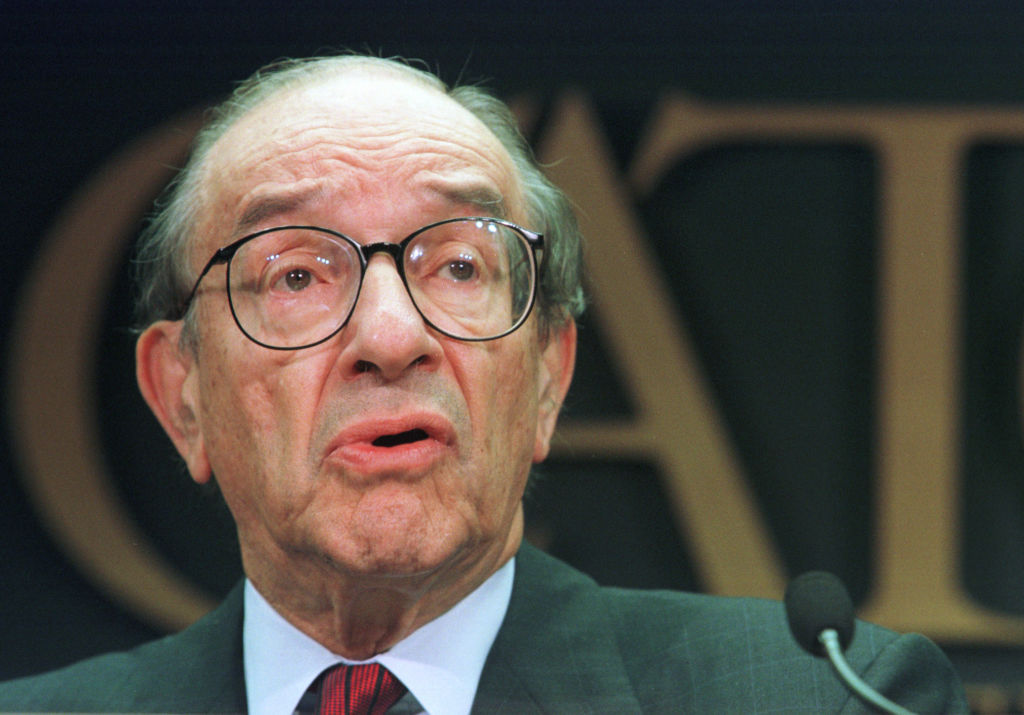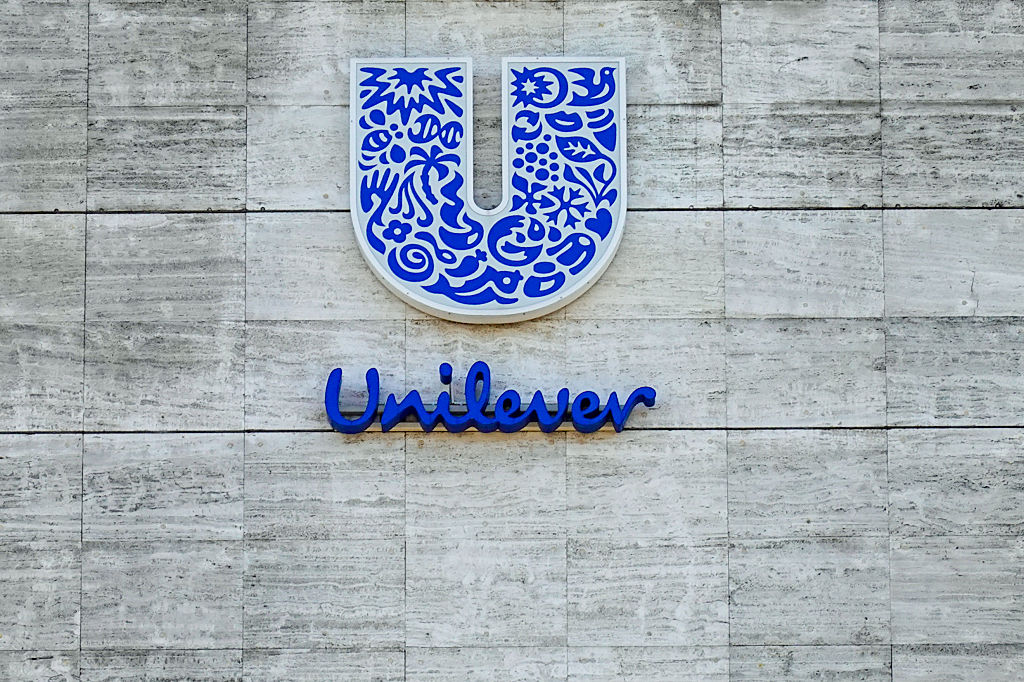'We still live in Alan Greenspan’s shadow'
When MoneyWeek launched 25 years ago, Alan Greenspan was in the chair at the US Federal Reserve. We’re still living with the consequences of the whirlwind he sowed then

The publication of Alan Greenspan’s memoir, The Age of Turbulence – a detailed apologia of his 19-year tenure at the US Federal Reserve (1987-2006) – coincided with the first gusts of the looming credit storm. In Britain, a historic bank run on Northern Rock was underway. “Inevitably, we now see his tenure through the prism of the current financial situation. Crisis may be too strong a word, but turbulence is certainly accurate,” noted a Guardian review in October 2007. To which the contemporary reader might add, you ain’t seen nothing yet.
Nearly two decades on, as Greenspan, 99, approaches his own centenary, the question posed by economist Howard Davies in 2007 hasn’t changed. “How far should the Fed be held responsible for sowing the seeds of the whirlwind by running an excessively lax monetary policy and… turning a blind eye to the explosion in subprime mortgages and the rapid growth of complex credit derivatives?” The only difference now is scale. If Greenspan’s Fed fuelled the global cataclysm of the Great Financial Crisis, it must also bear partial responsibility for everything that has happened since – from the distortions wrought by quantitative easing (QE) and the vast debt piles now crippling Western economies, to the growing chasm between the asset-rich and poor and the abandonment of notions of “moral hazard” in markets. If the great art of central banking – as outlined by Greenspan’s predecessor Paul Volcker – is knowing when to remove the “punchbowl” from the party, we are still nursing the hangover from the Maestro’s lengthy 1990s “Great Moderation” gig, which, as Britannica Money points out, remains “the longest official economic expansion in US history” and cemented Greenspan’s reputation as a “rock star” central banker.
After the 2008 crash, Greenspan’s public image “imploded as quickly as America’s overheated housing market”, noted Prospect in 2016. How did the man who invented the phrase “irrational exuberance” – to define the speculative excess of the turn-of-the-century dotcom era – became so blind to his own role as an enabler? The question of what Greenspan foresaw, but played down or ignored, has followed him down the years. The title of Sebastian Mallaby’s biography, The Man Who Knew, was “not necessarily a flattering sobriquet”. One thing that Greenspan certainly knew about was data. He was “recognised as unbeatable both on his raw knowledge of detailed economics and his instinctive grasp of the bigger picture”. While studying for a doctorate at Columbia in 1952 he met the polemical novelist Ayn Rand and became a member of her inner circle. Greenspan went on to form his own economic consulting firm, Townsend-Greenspan & Co., before cutting his political teeth – at Rand’s urging – as an adviser for Richard Nixon’s 1968 presidential campaign, later serving as chairman of the Council of Economic Advisers during Gerald Ford’s presidency.
MoneyWeek
Subscribe to MoneyWeek today and get your first six magazine issues absolutely FREE

Sign up to Money Morning
Don't miss the latest investment and personal finances news, market analysis, plus money-saving tips with our free twice-daily newsletter
Don't miss the latest investment and personal finances news, market analysis, plus money-saving tips with our free twice-daily newsletter
“The Greenspan put”
In 1987, Ronald Reagan nominated Greenspan to replace Volcker, says the Financial Times. A practised operator in the corridors of power, “he relished Washington’s social bubble and could play the status game with the best of them”, says Prospect. But it was his ability to deal with crises – from the October 1987 market crash through to the millennial dotbomb – that reassured his political masters over five successive terms. He became renowned for “the Greenspan put”: aggressively lowering rates to fight the popping of asset bubbles – a pragmatic approach at odds with his “hot-gospelling libertarian beliefs”, which fomented years of excessive risk, says the FT. Greenspan’s urgent desire to be at the heart of policymaking overcame his instincts – until eventually the mother of all bursting bubbles (to date…) overcame him.
This article was first published in MoneyWeek's magazine. Enjoy exclusive early access to news, opinion and analysis from our team of financial experts with a MoneyWeek subscription.
Get the latest financial news, insights and expert analysis from our award-winning MoneyWeek team, to help you understand what really matters when it comes to your finances.
Jane writes profiles for MoneyWeek and is city editor of The Week. A former British Society of Magazine Editors editor of the year, she cut her teeth in journalism editing The Daily Telegraph’s Letters page and writing gossip for the London Evening Standard – while contributing to a kaleidoscopic range of business magazines including Personnel Today, Edge, Microscope, Computing, PC Business World, and Business & Finance.
She has edited corporate publications for accountants BDO, business psychologists YSC Consulting, and the law firm Stephenson Harwood – also enjoying a stint as a researcher for the due diligence department of a global risk advisory firm.
Her sole book to date, Stay or Go? (2016), rehearsed the arguments on both sides of the EU referendum.
She lives in north London, has a degree in modern history from Trinity College, Oxford, and is currently learning to play the drums.
-
 How gifting money this Christmas could lower your inheritance tax bill
How gifting money this Christmas could lower your inheritance tax billCash is an easy and quick present to give over Christmas – and it could protect some of your estate from the taxman down the line
-
 £100 contactless card limit to be lifted
£100 contactless card limit to be liftedConsumers will be able to set their own contactless limits from March 2026, under new rules from the Financial Conduct Authority
-
 The coming collapse in the jobs market
The coming collapse in the jobs marketOpinion Once the Employment Bill becomes law, expect a full-scale collapse in hiring, says Matthew Lynn
-
 Luana Lopes Lara: The ballerina who made a billion from prediction markets
Luana Lopes Lara: The ballerina who made a billion from prediction marketsLuana Lopes Lara trained at the Bolshoi, but hung up her ballet shoes when she had the idea of setting up a business in the prediction markets. That paid off
-
 British blue chips offer investors reliable income and growth
British blue chips offer investors reliable income and growthOpinion Ben Russon, portfolio manager and co-head UK equities, ClearBridge Investments, highlights three British blue chips where he'd put his money
-
 Coreweave is on borrowed time
Coreweave is on borrowed timeAI infrastructure firm Coreweave is heading for trouble and is absurdly pricey, says Matthew Partridge
-
 Renewable energy funds are stuck between a ROC and a hard place
Renewable energy funds are stuck between a ROC and a hard placeRenewable energy funds were hit hard by the government’s subsidy changes, but they have only themselves to blame for their failure to build trust with investors
-
 Profit from document shredding with Restore
Profit from document shredding with RestoreRestore operates in a niche, but essential market. The business has exciting potential over the coming years, says Rupert Hargreaves
-
 The war dividend – how to invest in defence stocks as the world arms up
The war dividend – how to invest in defence stocks as the world arms upWestern governments are back on a war footing. Investors should be prepared, too, says Jamie Ward
-
 Literacy Capital: A trust where great returns fund a good cause
Literacy Capital: A trust where great returns fund a good causeThere’s plenty to like about specialist private-equity trust Literacy Capital, says Max King